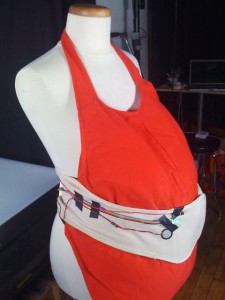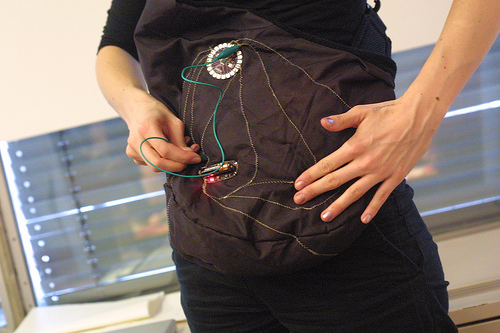 Ryoko Ueoka, Hiroki Kobayashi and Michitaka Hirose created this beautiful piece titled Wearable Forest from University of Tokyo and I can't get enough of it! This gorgeously delicate and illuminating dress interacts bio-acoustically with a remote forest. Lights are integrated into the fabric and their illuminations react to wildlife around the world through a wireless link connected to the internet. Real-time data and sound streams from the internet to the dress.
Ryoko Ueoka, Hiroki Kobayashi and Michitaka Hirose created this beautiful piece titled Wearable Forest from University of Tokyo and I can't get enough of it! This gorgeously delicate and illuminating dress interacts bio-acoustically with a remote forest. Lights are integrated into the fabric and their illuminations react to wildlife around the world through a wireless link connected to the internet. Real-time data and sound streams from the internet to the dress.
The beauty of this piece is that it expands beyond a single garment into one that is an ecosystem by enabling real-time environmental data from the web to interact with it. This provides a unique connection to nature and opens up the possibilities of "a completely new dimension of how clothing design can interact, react and merge with the environment," source via Talk2MyShirt.
See a video of the dress in action here.



